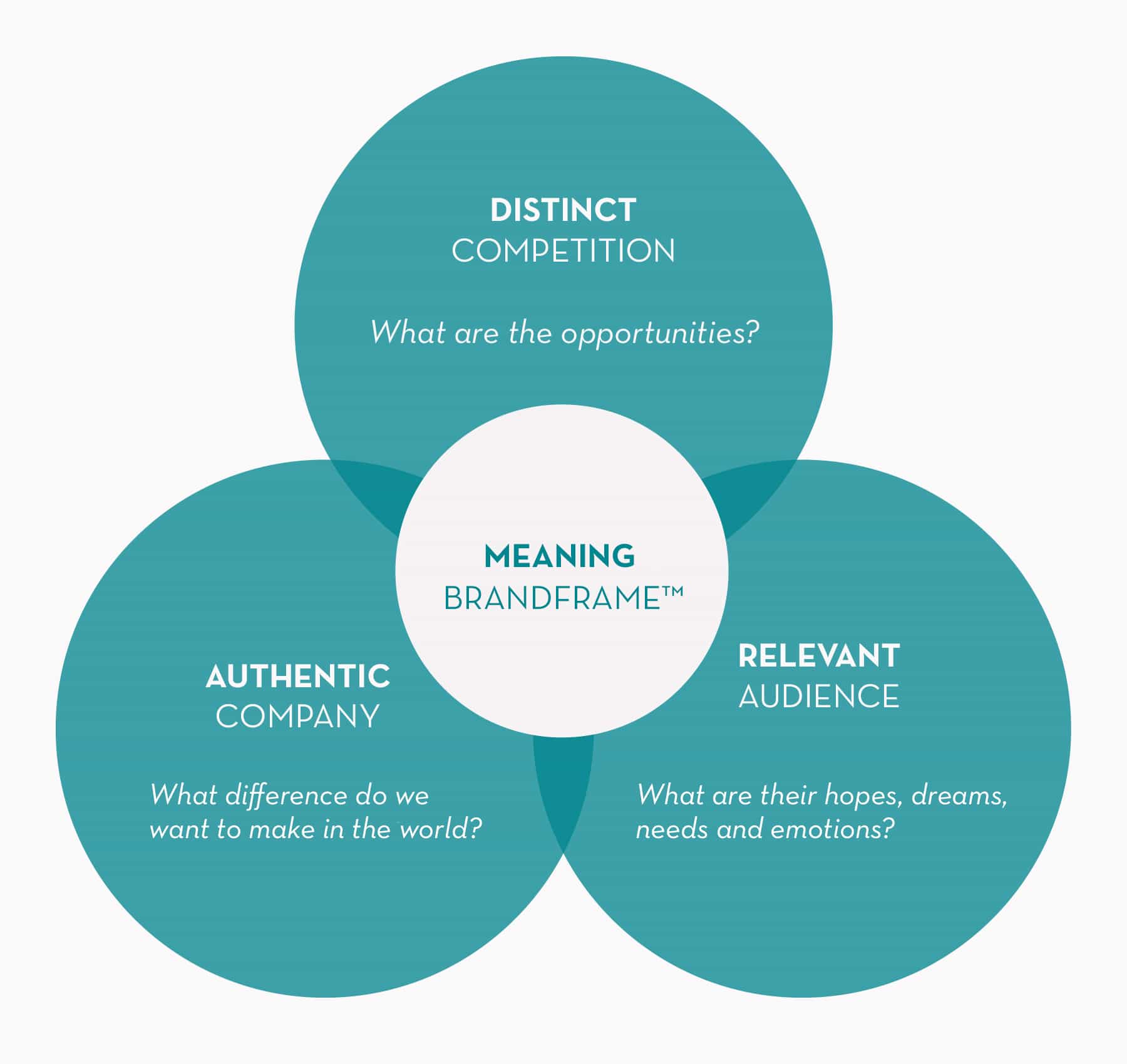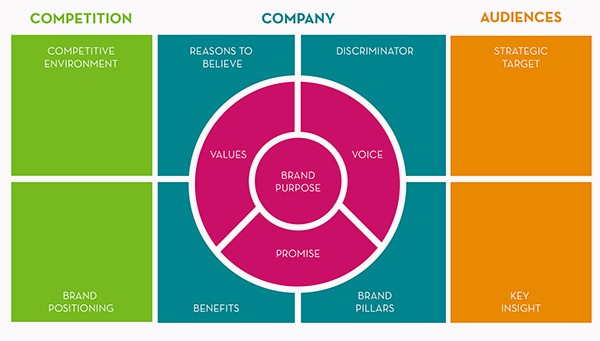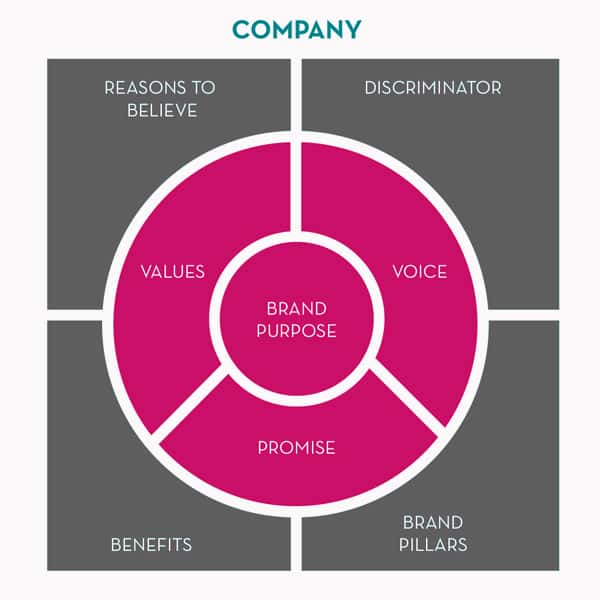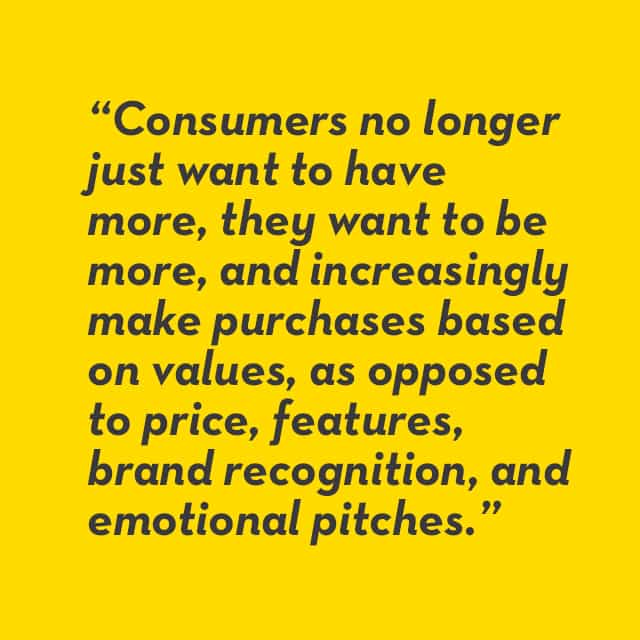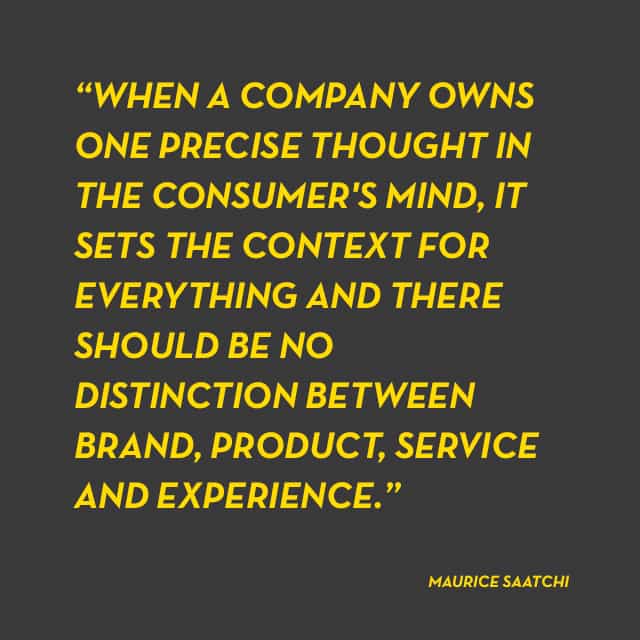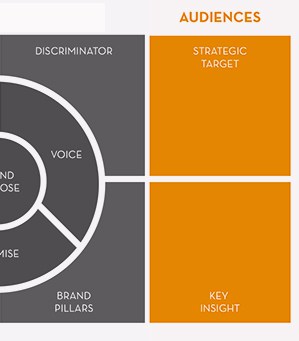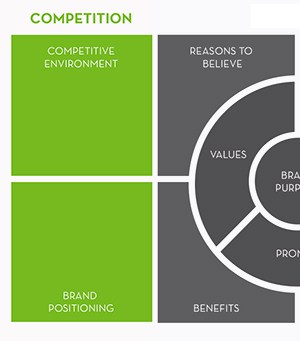BrandFrame: A Fresh Perspective on Creating Brand Meaning
Behind any great product is a strong brand — communication of its purpose, position and personality — all wrapped up in a simply stated idea of what it stands for, why it is meaningful, and how it makes us feel. But “brand” is one of the most misunderstood words in business, despite it being a vital component of an organizations success.
So why is it so universally misunderstood?
Well, let’s just start by getting honest. Branding has been the discipline most impacted by the organizational silos that exist in companies today. Typically, an internal group or agency is assigned one particular dimension of the brand to execute under the abstract narrative rolled out as “Our Brand,” be it advertising, corporate identity or product development.
The problem is that you are only as smart as the conversations you are in, and if you are not connecting the dots between the silos, you are in danger of delivering a schizophrenic and unsatisfying experience. The more you divide up every aspect of the customer experience, the less brand meaning you have and the more fragmented each touchpoint becomes.
Companies have traditionally focused on technology, generating benefits—not typically born out of a consumer need—with the underlying assumption that a new technological breakthrough would be automatically valued. Marketing was then responsible for creating desire through stimulation, status, and self-expression so the product could be sold—despite every part of the company telling a different story. What worked then, won’t work now. We live in an age of increasing transparency, an age where brand facades created to just merely persuade will not, and do not connect emotionally with their intended audience. Today’s customers want more than products, more than features, more than benefits, even more than experiences. They want brand meaning.
So, what are businesses’ missing? Where is the gap? What don’t they understand?
MEANING FIRST, TECHNOLOGY SECOND
Well, it’s simpler than you think. It’s no longer about what you sell or what you do; it’s about who you are and what you stand for. Two seemingly simple question’s, but two quandaries for any organization to answer. We are in the midst of “democratizing happiness,” shifting from a material society to a more experiential one as we ebb away from the industrial age and into the knowledge era (yes, we are just at the beginning).
The days of shouting your way to success by relying on a singular and limited form of communication are gone. Brands need to engage consumers in surprising and meaningful ways, connecting with culture to genuinely reach people. You cannot just be the big interrupter bent on creating a desire in the hope everyone will want your products and services.
ENTER BRANDFRAME
At THRIVE, we’re all about putting structure to complex processes, so we created a framework called BrandFrame™ to help businesses develop smart brands that are purpose-driven and meaningful. Why? Because a definite purpose is good for business, and brands with purpose rise to the top. Spoiler alert: it’s a business construct. It’s a human-centered approach to branding based on the analysis of three key factors — the company, the competition, and the audience — and the dimensions that can help make your market presence clearly felt.
Here’s how we break those down, think about them, and what each means to the full picture of your well-thought meaningful brand:
COMPANY: WHO YOU ARE
Anyone who wants to build a great brand must first define who they are on the inside. Ironically, it comes from looking outside-in, viewing your business in the context of the audience you serve and the value you bring to their lives. Knowing who you are, allows you to shape your brand’s character, why you are meaningful and the difference you want to make in the world. Taking this approach creates a brand that’s not only authentic to your business’s heritage and capability, but one that resonates with your target audience, and ensures they gain a real understanding of your purpose and cultural significance. In a nutshell, it creates a connection: laying the foundation for a positive, genuine relationship between your business and your customers.
In the BrandFrame™ method, we look at defining the following pieces of the company character puzzle:
BRAND CHARACTER DIMENSIONS – The core of who you are.
– Brand Purpose: The definitive statement about the difference you are trying to make in the world: it’s why you do what you do, beyond profit.
– Brand Promise: The pledge you make to your customers: it’s what you do for them and why they should care.
– Brand Values: The code by which the brand lives, what it stands for and what it believes in; the humanizing factors that define the brand’s behavior and personality.
– Brand Voice: How the brand speaks to its audiences.
THE IMPORTANCE OF FINDING YOUR PURPOSE
Having a “Purpose” is the most critical component of BrandFrame™. Why? Because people don’t buy a manufactured brand image anymore, they want the truth and are highly concerned with aligning themselves with brands that mirror their values. They crave brand meaning, and your brand’s purpose is the motivating force behind creating that meaning.
To have brand meaning you have to be relevant, you need to start from the outside-in and understand your target audience in rich detail. Drive you brands purpose from insights on the people you wish to serve. Imagine the role it plays holistically within the context of their daily lives as well as the trajectory of your organization. It’s why we put “Purpose” at the center of the whole framework. Constantly ask yourselves: How are we creating meaning in people’s lives?
ALIGNING BRAND, PURPOSE & CULTURE
Your employees play a critical role in your ability to deliver on your purpose. The good news is people don’t just come to work to collect a paycheck—well they do (we ALL have to pay the bills)—but they want to work for organizations that share their values. And if you want them to be engaged, living, breathing ambassadors of your brand, you need to tell them what they stand for. How they can make a difference in the world and why it matters. In short, they want to be something larger than themselves. People look to brands, and that means employee brands too!
MAKE YOUR VALUES ACTIONABLE FOR YOUR BRAND
Nothing is more important than your brand’s values, yet this is the biggest stumbling block for organization’s when creating brand meaning. We live in a very complicated and noisy world, a world where it is getting harder to be heard and stand out. The world where the atomization of media has flipped the relationship between companies and customers in an unprecedented transfer of power. The empowered consumer wants to be more, and that means your values have to mirror theirs, and your products and services need to help them build their identity so that they can be the heroes of their own journey.
You need to get beyond the cliché posters you find on the walls of corporate America: Innovative, Teamwork, Respect, Integrity, etc. While these are important, to create true brand meaning your values need to mirror those of your desired audience in order to attract them and create lasting loyalty. We look at values two ways:
– Corporate Values: Corporate Values differ from Brand Values in that they are an internal set of values focused on the employee population, expected behaviors, and the notion of building a strong, vibrant culture. They are a framework for corporate governance that exists to drive the people within the business.
– Brand Values: Brand values are what make your purpose actionable in the world. They inform the development of the brand’s ecosystem of products and services in a way that emotionally connects with your audience and helps achieve your brand’s purpose. Having a set of brand values humanizes the brand, helping to define its personality and how it needs to deliver value.
To create brand meaning with your target audience, you need to create your brand values from the outside-in. If the customer is truly king, you should know what they want, and that means knowing what they value so you can be meaningful to them.
VALUE PROPOSITION DIMENSIONS –The actionable, outward-facing things that define your uniqueness.
– Brand Pillars: Brand Pillars make a brand position actionable by providing a framework that guides behaviors and everything a brand does. Brand Pillars help to create the product experience. They describe what we do and the actions to take.
– Benefits: How the brand solves customer problems and offers an improvement in some aspect of their lives.
– Discriminator: The single most compelling reason for a customer to choose the brand.
– Reasons to Believe: The evidence why the brand is better than alternative brands.
AUDIENCE: WHO YOU MUST REACH
A brand doesn’t just communicate capabilities. The great ones look at the needs, wants and values of their audience to find an opportunity for emotional leverage that taps into their core beliefs. They reach the hearts and minds of the people who use their product or service every day and connect with them in a way that leaves a deep, intimate impression.
When getting into the minds and lives of an audience, we work on defining two things:
– Strategic Target(s): Figuring out the person or group of people for whom the brand should be the first choice.
– Key Insight(s): Applying knowledge gained in the above step to see into the audience’s world and establish a connection between the brand and their daily challenges. The goal: elicit the emotional response “you obviously understand me,” and show how the brand can solve the person’s problem(s).
THE POWER OF HAVING A KEY INSIGHT
An insight is an unrecognized fundamental human truth. A penetrating observation about human behavior that results in you seeing consumers from a fresh perspective. The great ones are incredibly potent, so powerful in fact that they can drive your whole brand and its positioning.
The Dollar Shave Club, a subscription based razor company, was founded on the insight that “Price Still Matters.” The cost for a packet of razor blades run from $20 to 40 dollars at your average pharmacy or drugstore. Dollar Shave Club found a membership model that made them cheaper. A monthly subscription service that sends you a free handle and a monthly shipment of blades. The result was the rapid emergence of an incredibly powerful brand, challenging the category status quo and its incumbents; Gillette and Schick. In July 2016, Dollar Shave Club was acquired by Unilever for a reported $1 billion in cash. How’s that for potent?
HOW DO YOU KNOW WHEN YOU HAVE A KEY INSIGHT?
You know you have a powerful key insight when it can be recognized to do the following:
– It connects with consumers on an emotional level and elicits the reaction “you obviously understand me.”
– It re-examines existing conventions and challenges the status quo.
– It solves a real problem that results in the creation of new customers.
– It inspires action by giving you a clear target to aim for.
– It is a clear statement of what do next and how to deliver value to your customers.
Finding that critical insight is exceptionally tough, but companies that can develop a potent key insight will be potential game-changers with the ability to power their brand with real (outside-in) brand meaning.
COMPETITION: ADDRESSING WHO YOU’RE UP AGAINST
Finally, building brand meaning is not only about identifying what it stands for, but also how it stands apart from its competitors. By analyzing the competitive landscape and how your product or service compares to others in the market, you can focus on branding opportunities that help differentiate the business from the competitive set and show how it delivers something special.
To be truly distinct you need to define two different elements:
– Competitive Environment: The market and its choices as seen by the audience and the choice available to the consumer, with which your brand competes.
– Brand Positioning: A succinct description that identifies the target audience, the brand and its respective categories, a specific benefit, a reason to believe and how the brand credibly demonstrates its superiority from the nearest competitive alternative.
THE BENEFITS OF HAVING A BRANDFRAME
BrandFrame not only provides the foundation for the development of authentic brand meaning, but it also aligns the many dimensions to drive a cohesive experience across all touch points. Together, they become a set of brand experience guidelines to deliver a brand that is:
RELEVANT: Demonstrates a deep understanding of the customer’s hopes, dreams, values, needs, and emotions to ensure that these are mirrored by the company and its employees. This will determine the specific benefits the brand experience will need to communicate to build a relationship based on a shared understanding of value.
DISTINCT: Understands how customers and employees view the competitive set and what values they ascribe to them. What points of parity exist within the industry? What antes do we need to adopt to be credible? And what opportunities exist to make us distinct from the competition?
AUTHENTIC: Defines what’s authentic to the business’ customers and employees. What is real and meaningful to them? Compare this to their perceptions of the business’s brand and determine where we can be authentic to gain an advantage by being true to our heritage and capability. From here we can deliver against the expectations customers have of us.
CLEAR: Creates substance behind the brand by communicating, verbally, visually and behaviorally what the brand stands for regarding its purpose, promise, values, positioning and value proposition (both emotionally and functionally). This is one of the central strategic factors for success.
CONSISTENT: Develops a consistent brand experience that is scalable and repeatable across a variety of customer, employee and community touchpoints, and situations. Brand consistency is required for easy brand recognition. With recognition comes familiarity. With familiarity comes trust and confidence.
Put BrandFrame to work in your organization to inspire consumers to look to promote, evangelize and join your brand. And use it continuously to connect emotionally with your desired audience.




